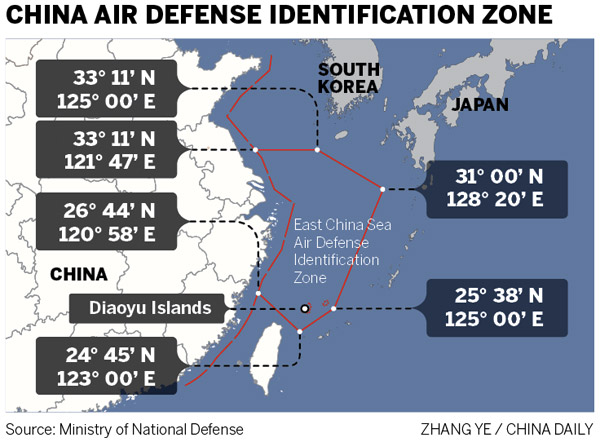China's upgraded periphery diplomacy
- By Shen Dingli
 0 Comment(s)
0 Comment(s) Print
Print E-mail China.org.cn, November 26, 2013
E-mail China.org.cn, November 26, 2013
The U.S. and Japan reacted immediately after China announced its plan to establish the East China Sea Air Defense Identification Zone on Nov. 23. The U.S. expressed its "concern" and Japan said that it couldn't accept the fact that the zone covered the Diaoyu Islands.

READ: Accusations about China's air defense zone unjustified
Looking back a month ago, President Xi stressed at a high level meeting dedicated to periphery diplomacy that dealing with neighboring countries "should have a three-dimensional, multi-element perspective." Undoubtedly, the establishment of the East China Sea Air Defense Identification Zone is an indispensable part of China's new periphery diplomacy. China's diplomacy with neighboring countries has evolved from "reactive" to proactive. It looks to safeguard rights and stability at the same time, and will evolve further into "top-level design that consolidates the foundation."
China has achieved rapid development in the 21st century. In the meantime, significant changes have taken place in China's peripheral environment. Some of them are beneficial to China while some have had adverse effects.
China-Japan relations are at the worst point since the normalization of relations in 1972. Tensions between Japan and China over disputed islands in the East China Sea could worsen if an accident occurs in the disputed waters.






Go to Forum >>0 Comment(s)